Moles are small, digging mammals with velvety fur and long, sharp claws. While they are proficient swimmers and can even climb trees, moles, however, spend most of their time underground in extensive tunnel systems where they forage for food. They play an essential role in the ecosystem by aerating the soil and consuming large numbers of insects.
Table of Contents
6 Interesting Mole Facts
Here are some interesting facts about moles:
- Moles have poor eyesight and rely on their sense of touch to navigate their underground tunnels.
- Moles are proficient swimmers and can often be found swimming in ponds and streams.
- Moles are solitary creatures and typically only come together to mate.
- Moles give birth to litters of 2-5 babies born blind and hairless.
- The average lifespan of a mole is 3-5 years.
- Some people believe that moles are good luck charms and that having one on your property will bring you good fortune.
Types Of Moles
While different types of moles exist, most of these species share several general characteristics.
For instance, certain types of moles have small bodies covered in hairless and long snouts, dark hair, tiny ears/eyes, and broad shovel-like forepaws. Although many commonly mistake moles for rodents because of their similarities with marmots and ground squirrels, moles are mammals.
Some common types of moles include Star-nosed mole, Shrew mole, Eastern mole, and Hairy-tailed mole.
Star Nosed Mole
The Star Nosed Mole is definitely one of the most unique and interesting-looking moles. It is easily recognizable by its star-shaped nose, which is covered in 22 pink, fleshy tentacles.
These tentacles help the mole feel its way around as it is blind. The star-nosed mole is also the fastest-eating mammal in the world! It can eat up to 34 times per minute which equals about 17% of its body weight every day!
Star-nosed moles are found in North America and live in wet lowland areas where they build their nests.
They are good swimmers and often enter the water to look for food. Some of the things they eat include earthworms, insects, and small invertebrates.
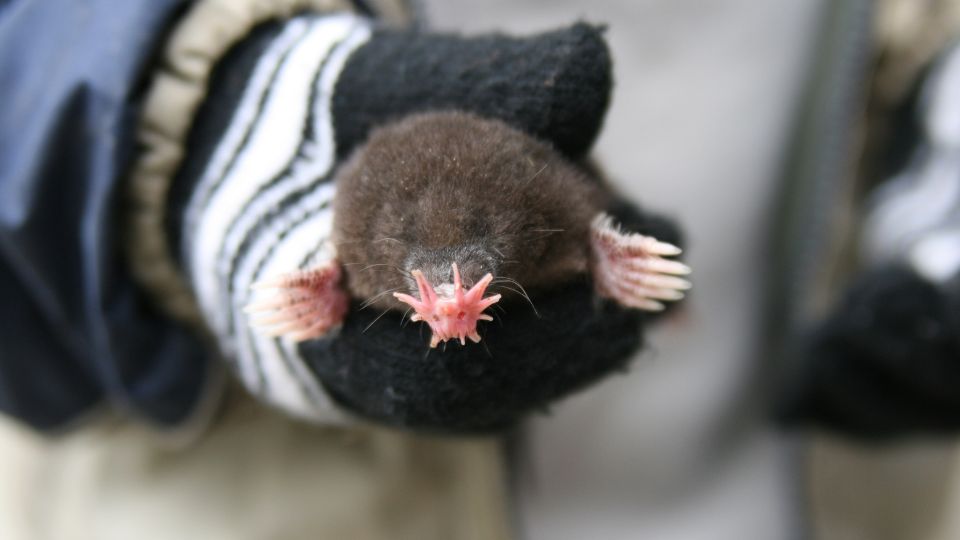
Shrew Mole
The Shrew Mole is very similar in appearance to the Star-Nosed Mole. They are often confused with one another.
The most noteworthy difference between them is that Shrew Moles do not have a star-shaped nose. Otherwise, they are nearly identical in size and coloration.
Like the Star Nosed Mole, Shrew Moles are also blind and use their sense of touch to navigate through their tunnels and find food. These moles live in North America and can be found in various habitats such as woodlands, forests, and even suburban areas.
They mainly eat insects but have also been known to eat earthworms, snails, and other small invertebrates.
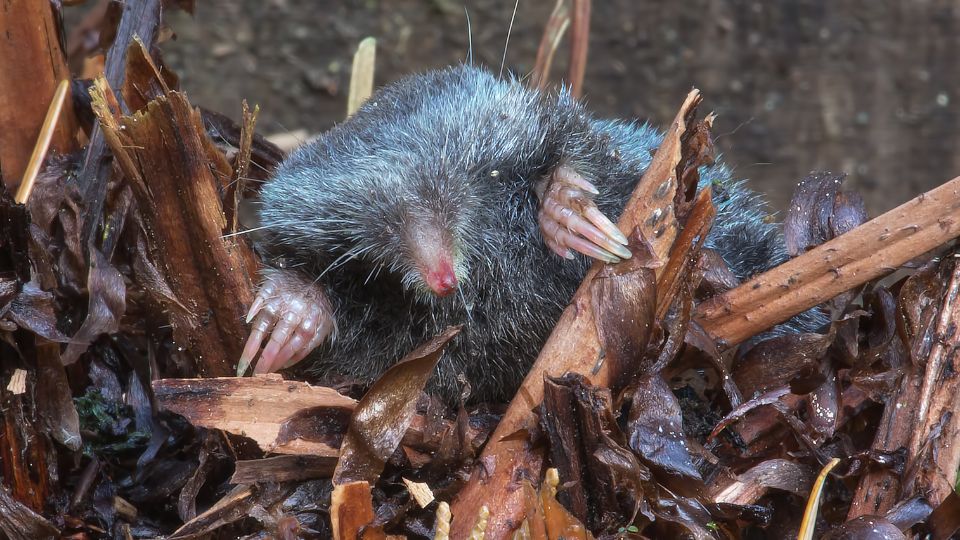
Eastern Mole
The Eastern Mole is actually one of the most common types of moles found in North America. They are usually found east of the Rocky Mountains to the Atlantic coast.
Eastern moles are small mammals that have dark fur and long snouts. Their two front legs are shorter than their back legs, giving them a slightly hunched-over appearance when walking.
They use these short front legs to dig their burrows up to 15 feet deep! Eastern Moles mainly eat insects but have also been known to eat earthworms, snails, and other small invertebrates.
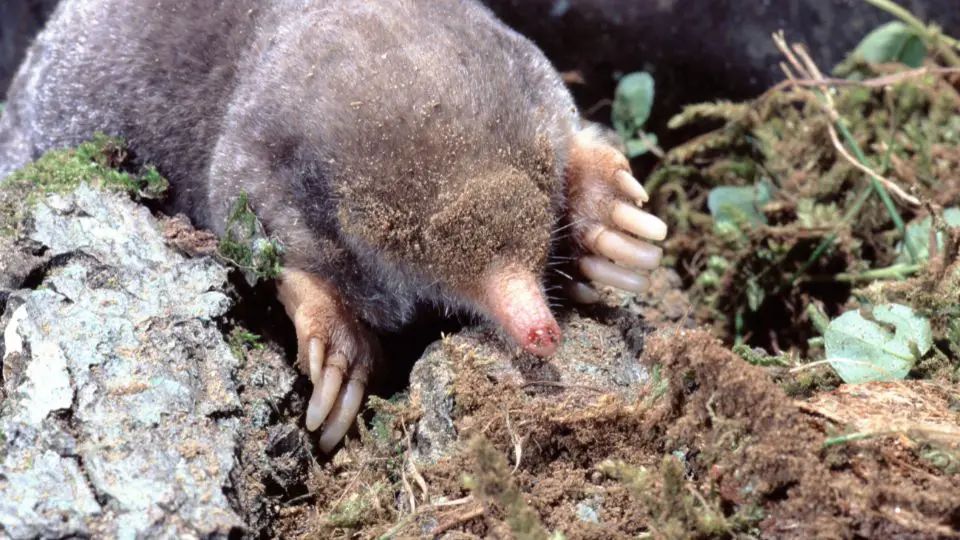
Hairy-Tailed Mole
The Hairy-tailed Mole is very similar in appearance to the Eastern Mole. The chief difference between the two is that the Hairy-tailed Mole has a long, furry tail.
Other than that, they are almost identical in size and coloration. Like the Eastern mole, Hairy-tailed moles also use their front legs to dig their burrows.
Hairy-tailed moles mainly eat insects but have also been known to eat earthworms, snails, and other small invertebrates.

Do Moles Have Eyes?
Moles do have eyes. However, moles are small, burrowing mammals that rely on their sense of hearing and touch to navigate their underground homes.
While some species of moles have very small eyes, they are beneath the fur and do not provide the creature with much vision. Instead, moles use their keen sense of smell to find food and avoid predators.
Where Do Moles Live?
While most common in North America, you can also find them in Europe, Asia, and Africa. Moles typically live in underground burrows and tunnels, where they build their nests and raise their young.
Moles are generally solitary creatures but sometimes share their burrows with other moles. They are excellent swimmers and can even climb trees in search of food.
While moles are not considered a threat to humans, they can be problematic for farmers and gardeners as they can cause damage to crops and gardens. Moles are also known to destroy lawns in their search for food.
If you have a mole problem, there are a variety of traps and repellents that can be used to get rid of them. Hiring a professional pest control company is prudent if you have a severe mole infestation.
What Do Moles Eat?
A mole’s diet primarily consists of insects and earthworms, which use their sharp claws to dig up from the ground.
Occasionally, they will also eat small rodents, reptiles, and birds. In terms of plants, moles do not eat them but rather consume the grubs and other insects found on or near the plant roots.
Moles have very high metabolism rates and need to eat frequently throughout the day to maintain their energy levels. As a result, they typically consume around 80% of their body weight daily.
This means that a full-grown adult mole can eat up to 5 grams of food per day!
Do Moles Hibernate?
Moles do not hibernate in the traditional sense of the word. Hibernation is a state of deep sleep that occurs in some mammals during winter.
This state helps them to conserve energy and survive on stored fat reserves. Moles, however, do not go into this type of deep sleep. Instead, moles enter what is known as torpor.
Torpor is a state of reduced activity and metabolism. This is not as deep of a sleep as hibernation, but it does help the mole to conserve energy and survive on limited food resources.
Moles typically enter a state of torpor during the winter months. This is when food is scarce, and the ground is frozen over. Moles can make it through these harsh conditions by slowing down their activity and metabolism.
So, while moles do not technically hibernate, they do enter a state of reduced activity during the winter months. This helps them to survive on limited food resources until spring arrives and conditions improve.
Vole Vs. Mole: Key Differences
Voles and moles are both small, burrowing animals that can cause damage to your lawn or garden. But here are some key differences that can help you tell them apart:
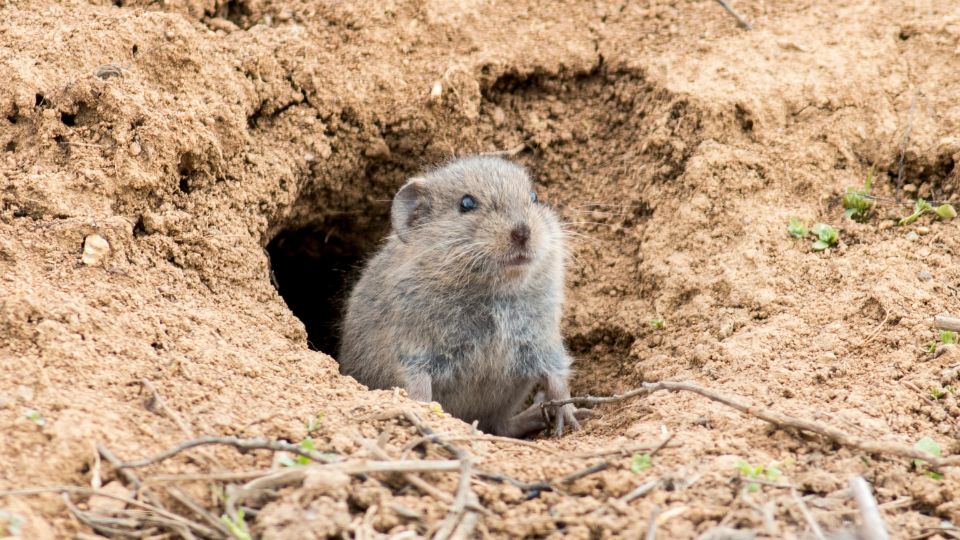
Size
Moles are generally larger than voles, with adults reaching lengths of up to 9 inches (23 cm). Voles, on the other hand, only grow to be about 4-7 inches (10-17 cm) long.
Tail Length
Another way to tell these two animals apart—looking at their tails. Moles have much shorter tails than voles, with the longest measuring just 2 inches (5 cm). Vole tails, on the other hand, can be up to 4 inches (10 cm) long.
Diet
Moles are mainly insectivores, meaning that they eat mostly insects. Voles, however, are herbivores and primarily feed on plants.
Burrowing Behaviour
One of the most marked ways to tell moles and voles apart is their burrowing behavior. Moles tunnel underground, creating long, winding tunnels in their search for food.
On the other hand, Voles create shallower burrows with surface runways connecting different areas of their territory.
Shrew Vs. Mole: Key Differences
Both moles and shrews are both small, burrowing mammals that can be found in gardens and fields across North America. They are quite often mistaken for one another, but these two creatures have several key differences.
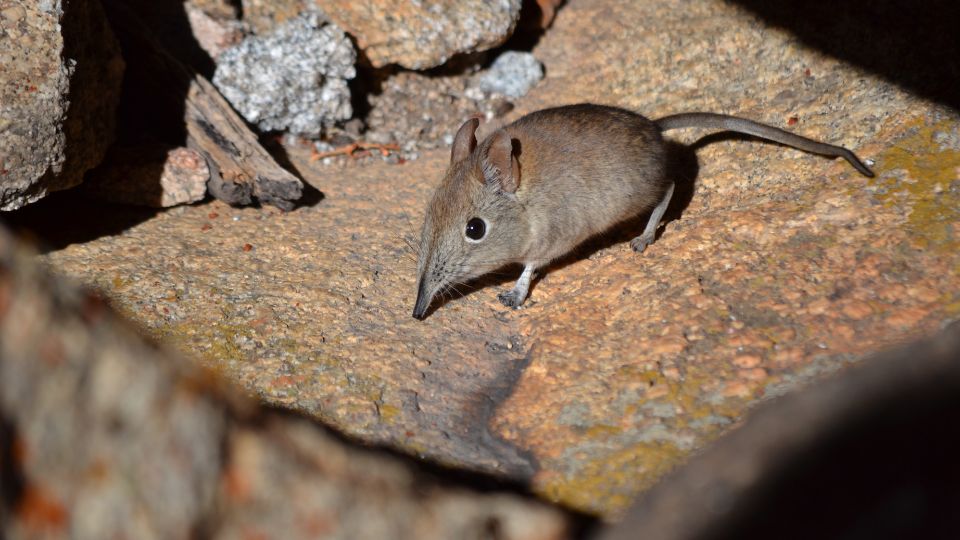
Body Size
Shrews are much smaller than moles, with a body length of only 3-4 inches. They also have a longer snout and narrow and pointed tails.
Behavior
Shrews are very active during the day, while moles are primarily active at night.
Diet
Moles tunnel through the ground in search of food, while shrews only dig small burrows to live in. Moles eat insects and grubs, while shrews primarily eat insects and other small animals.

